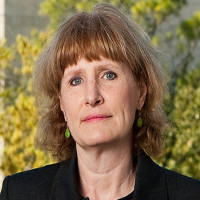How Delaying Motherhood Is Changing American Society
Posted on May 16, 2018 | Comments 0
According to the U.S. Centers for Disease Control and Prevention, births to teens and women in their 20s have dropped in recent years. But the number of births to older women continue to rise. In 2016, the birth rate for women ages 30-34 surpassed that for women who are 25-29 years of age for the first time. The average age at first birth of the American mother is now 26.6 years. In 2016, one in 10 first babies was born to a mother 35 years old or older, while in 1970 it was one in 100.
By delaying motherhood, women are accruing both education and financial power comparable to their male peers. Researchers are also documenting other gains from delayed motherhood, such as improved test scores among their children, and higher income levels for women who have waited to have children.
 Elizabeth Gregory, a professor of English and the director the Women’s, Gender & Sexuality Studies program at the University of Houston, says that “such a big change has required much reweaving of the social fabric, designed for millennia around the expectation that women would spend most of their lives bearing and rearing children.”
Elizabeth Gregory, a professor of English and the director the Women’s, Gender & Sexuality Studies program at the University of Houston, says that “such a big change has required much reweaving of the social fabric, designed for millennia around the expectation that women would spend most of their lives bearing and rearing children.”
Professor Gregory, who delayed having her first child until age 39 after she had secured a Ph.D. and was granted tenure, adds that women’s choices about delaying motherhood “are adding up to radical transformations of family life, the business world and the polity.” Her research has shown that “the overwhelming majority of women viewed the choice to have children after 35 as one of the most positive choices they had made in their entire lives.”
Professor Gregory is the author of Ready: Why Women Are Embracing the New Later Motherhood (Basic Books, 2007). A graduate of Barnard College in New York City, Dr. Gregory holds a master’s degree from the University of Kentucky and a Ph.D. from Yale University.
Filed Under: Research/Study








